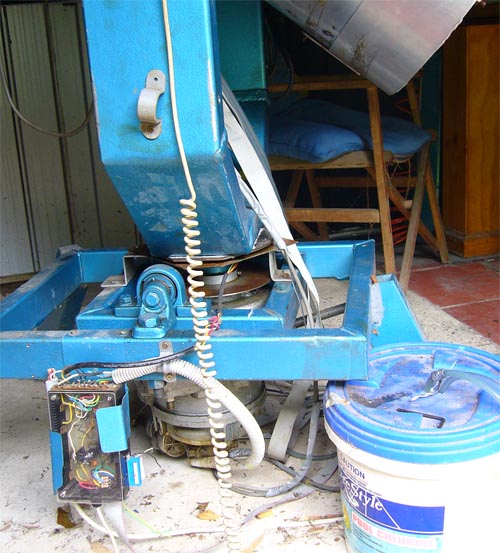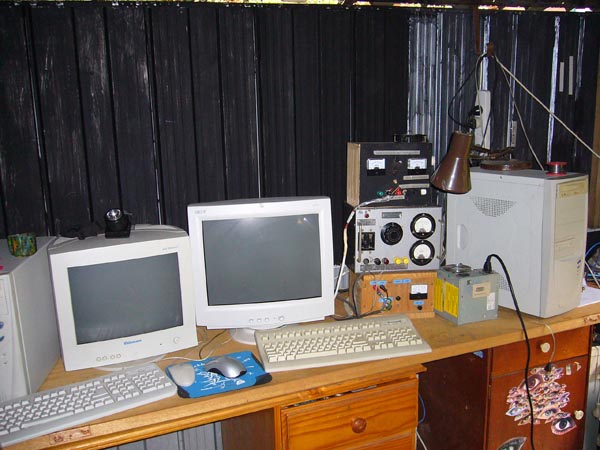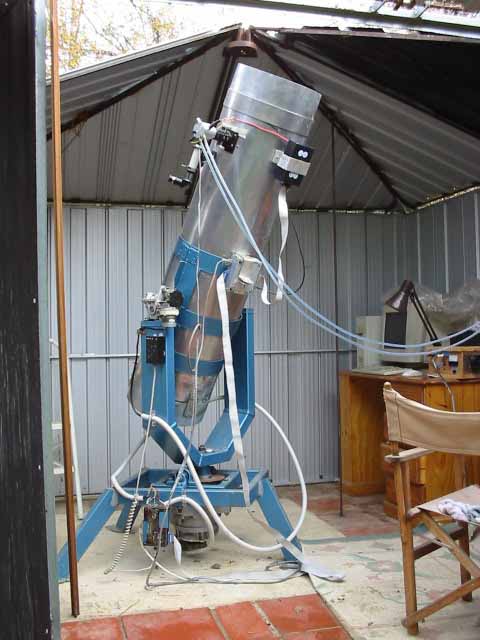
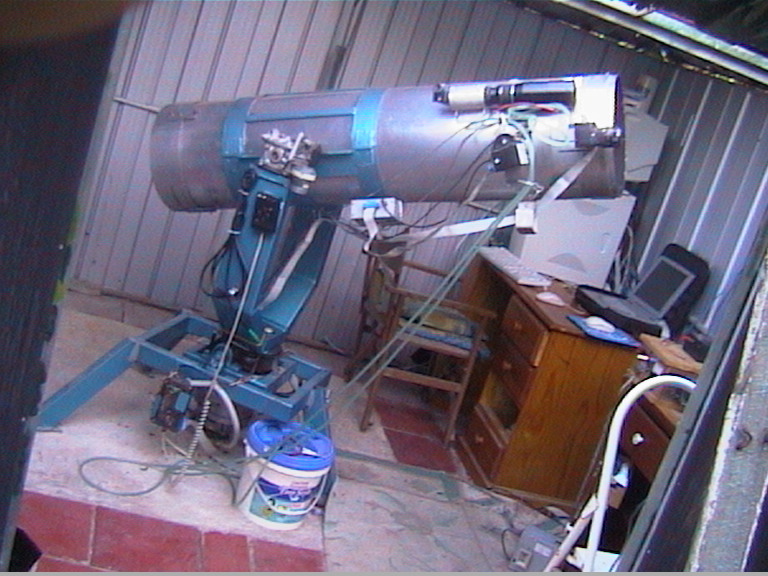
SCOPE MODIFICATIONS 2005
How do you like these pictures of the telescope I made with Nick Booth's help? They show that the scope can be either an Altazimuth or Equatorial mount.
The whole thing is pretty heavy .... I'd say about 100 Kgs. Most of the weight is at the bottom in the reduction gear (50:1) which I got from an
engineering firm that was throwing it out. It helps to keep the centre of gravity very low and adds to the stability. Unfortunately though, the backlash on
this gearbox is huge (about 18 arcmin) so I have a lot of trouble actually following anything for long.
In the focussing tube I've placed the CCD camera I made also with Nick's help. He turned and made the housing I did the electronics.
I no longer use eyepieces, except for the times that I have visitors. I made a wide field CCD camera using the Steve Chambers design, using a logitech 4000
and have it mounted on the body of the scope. This helps both as a coarse finder and as a search tool for unusual objects.


Recently I added a few new features ie. 'A second CCD camera made from a logitech 4000 quick cam using the "SC" modifications.
This camera is peltier cooled and uses the same coolant source as the main CB245 camers. I added an old 35mm camera lens to it to
narrow down the field of view as I use this camera for finding purposes. On those cold frosty nights in the Dandenong ranges I can view the night sky
and operate the camera from a computer inside the house via "Remote Connection" .
The greatest advantage is that this camera allows me to scan the skies for objects that I would never detect with the unaided eye or through binoculars, particularly
through the neon/sodium soaked atmosphere caused by light pollution.
The clear tubes are for the water cooling of the camera and below, the flexible conduits have given way to a home made rotor for the stepper motors.
I made a hand control unit from a radar scanner, keyboard and VCR.
On the first night I used this system, but without the camera, I rediscovered NGC 5128, a very inhospitable looking galaxy quite unlike the warm and inviting Andromeda galaxy.
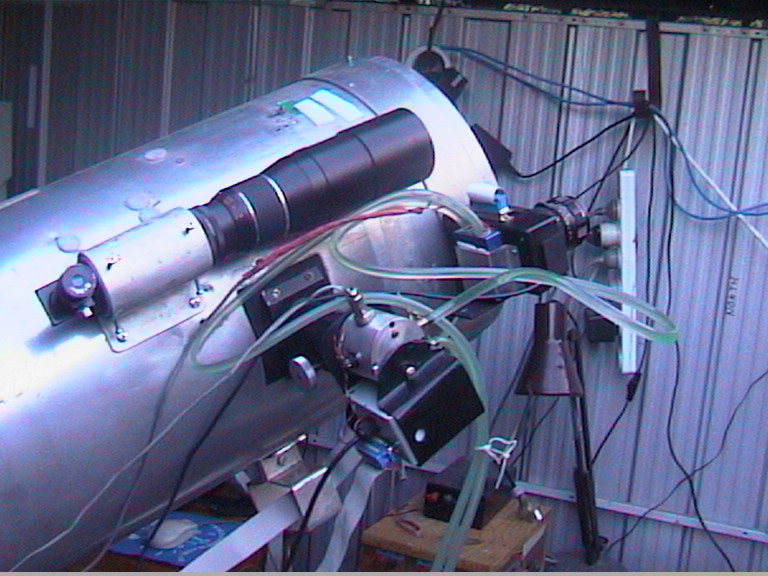
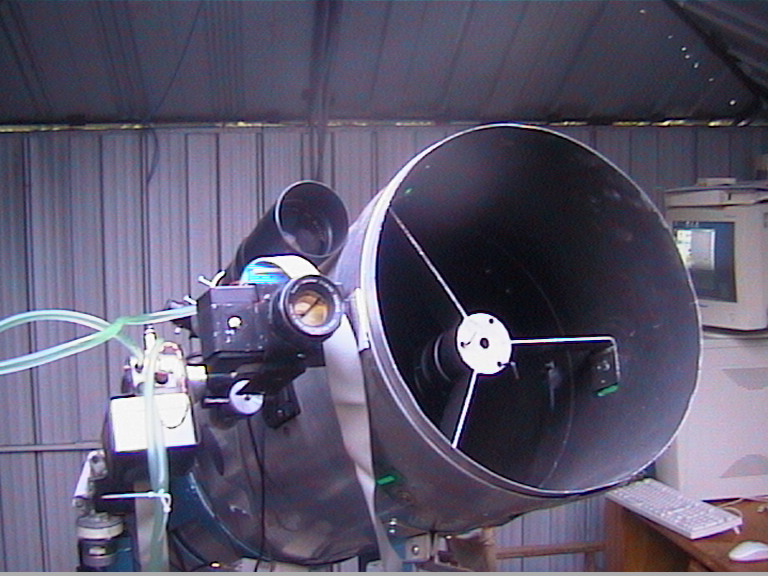
Things to do are: convert an old marine telescope into a finderscope with greater resolution, Make a new tube and add a spider for the secondary mirror array.
A new driver circuit for the camera's peltier that doesn't blow when I run it at 8 volts. Improve the cooling chamber in the camera's water-jacket and get a better primary mirror.
Oh and learn how to use the scope's driver software to it's fullest capabilities.
